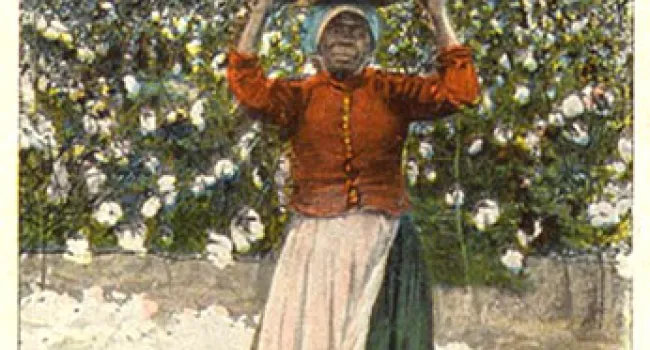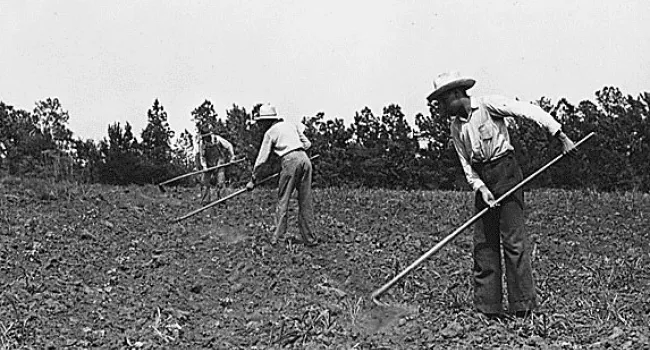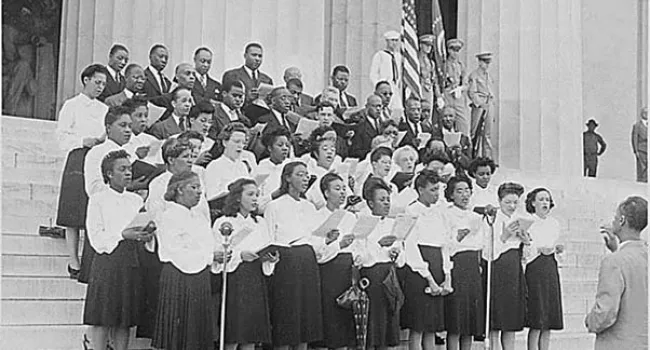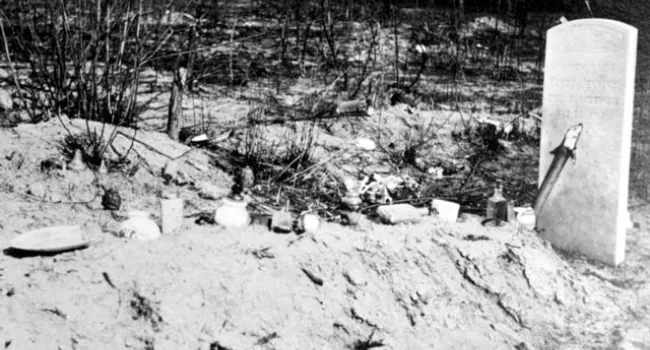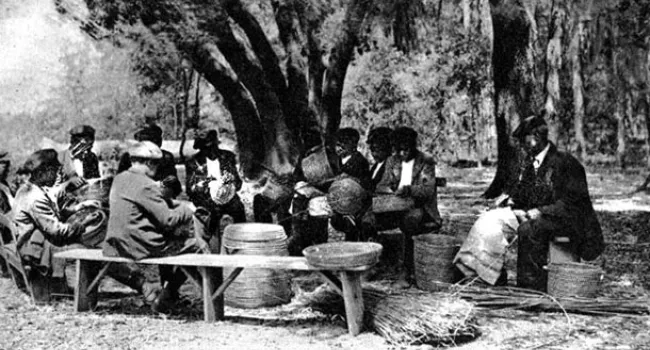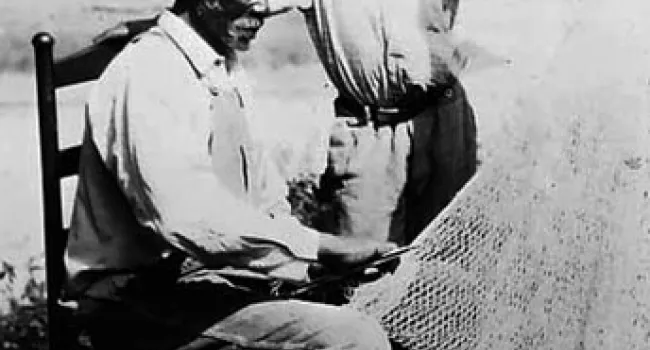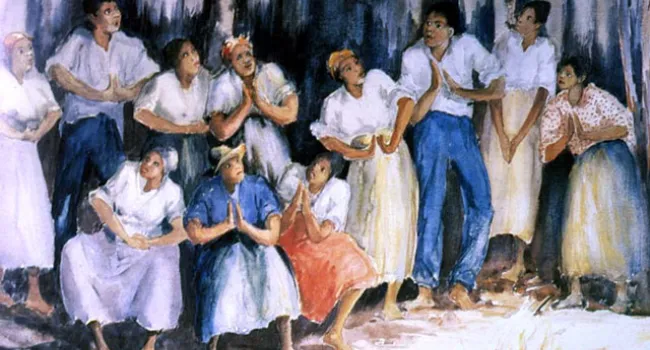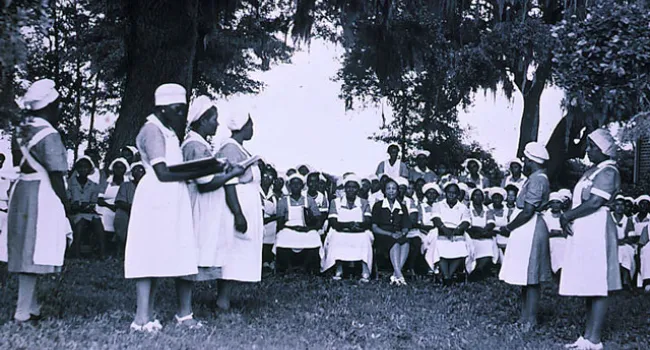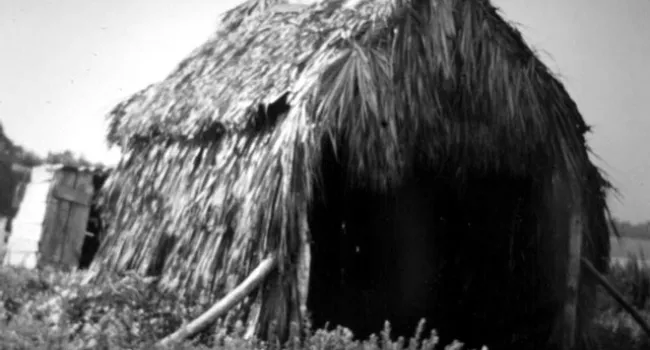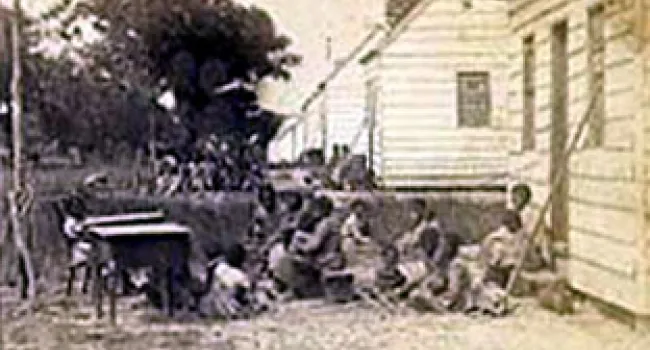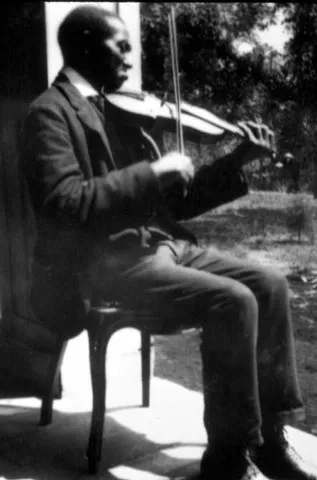
An unknown man, Charleston County, playing the fiddle, around 1900. By rights this photograph should be of a banjo, whose origins are indisputably African. As early as the late 17th century, records indicate that slaves had adapted the Europeans' "fiddle," and used it as an instrument on which to play the music brought with them in their minds from Africa. Slave ship captains, and observers of those ships, reported that the captured Africans were encouraged both to sing and to dance, the latter as a means of exercise for preserving their health. Some records indicate that captives aboard these ships brought with them instruments of their own.
Courtesy of the Charleston Museum, Charleston, South Carolina.
Standards
- This indicator was written to promote inquiry into the unique development of ethnic, political, and religious identities in the New England, Mid-Atlantic, and Southern colonies.
- This indicator was developed to encourage inquiry into how the former planter class, African Americans, women, and others adjusted to, gained, lost, and/or regained position and status during Reconstruction. This indicator was also written to foster inquiry into how South Carolina worked with a stronger federal government and expanding international markets.
